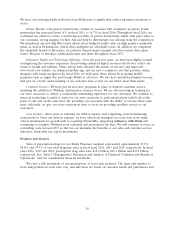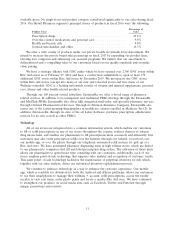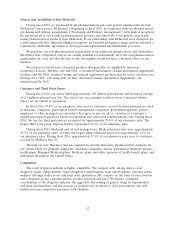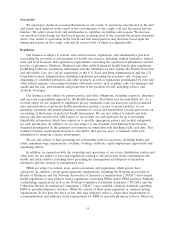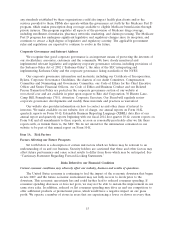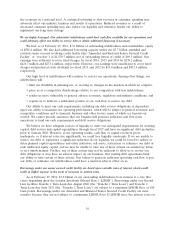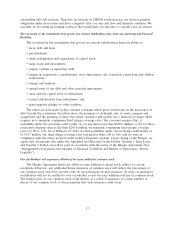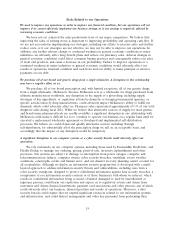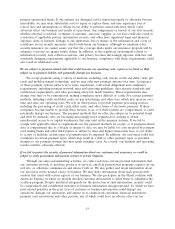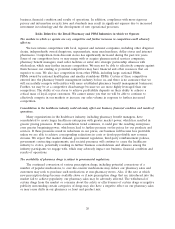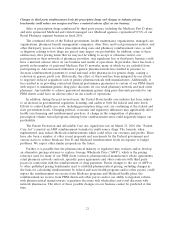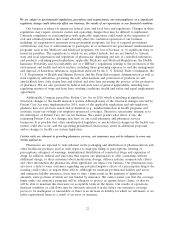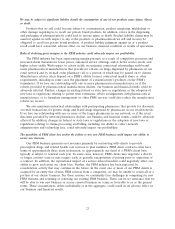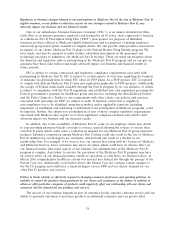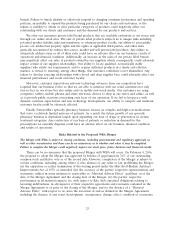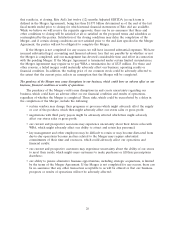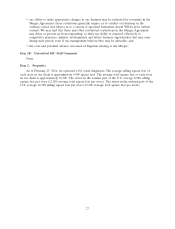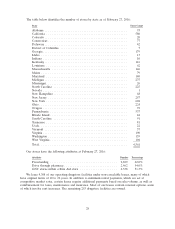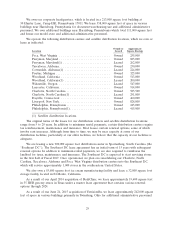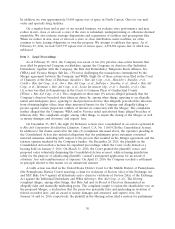Rite Aid 2016 Annual Report Download - page 20
Download and view the complete annual report
Please find page 20 of the 2016 Rite Aid annual report below. You can navigate through the pages in the report by either clicking on the pages listed below, or by using the keyword search tool below to find specific information within the annual report.business, financial condition and results of operations. In addition, compliance with more rigorous
privacy and information security laws and standards may result in significant expense due to increased
investment in technology and the development of new operational processes.
Risks Related to the Retail Pharmacy and PBM Industries in which we Operate
The markets in which we operate are very competitive and further increases in competition could adversely
affect us.
We face intense competition with local, regional and national companies, including other drugstore
chains, independently owned drugstores, supermarkets, mass merchandisers, dollar stores and internet
pharmacies. Competition from discount stores has significantly increased during the past few years.
Some of our competitors have or may merge with or acquire pharmaceutical services companies,
pharmacy benefit managers, mail order facilities or enter into strategic partnership alliances with
wholesalers, which may further increase competition. We may not be able to effectively compete against
them because our existing or potential competitors may have financial and other resources that are
superior to ours. We also face competition from other PBMs, including large, national PBMs,
PBMs owned by national health plans and smaller standalone PBMs. Certain of these competitors
entered into the pharmacy benefit management industry before us, and there is no assurance that we
will successfully compete with entities with more established pharmacy benefit management businesses.
Further, we may be at a competitive disadvantage because we are more highly leveraged than our
competitors. The ability of our stores to achieve profitability depends on their ability to achieve a
critical mass of loyal, repeat customers. We cannot assure you that we will be able to continue to
effectively compete in our markets or increase our sales volume in response to further increased
competition.
Consolidation in the healthcare industry could adversely affect our business, financial condition and results of
operations.
Many organizations in the healthcare industry, including pharmacy benefit managers, have
consolidated to create larger healthcare enterprises with greater market power, which has resulted in
greater pricing pressures. If this consolidation trend continues, it could give the resulting enterprises
even greater bargaining power, which may lead to further pressure on the prices for our products and
services. If these pressures result in reductions in our prices, our business will become less profitable
unless we are able to achieve corresponding reductions in costs or develop profitable new revenue
streams. We expect that market demand, government regulation, third-party reimbursement policies,
government contracting requirements, and societal pressures will continue to cause the healthcare
industry to evolve, potentially resulting in further business consolidations and alliances among the
industry participants we engage with, which may adversely impact our business, financial condition and
results of operations.
The availability of pharmacy drugs is subject to governmental regulations.
The continued conversion of various prescription drugs, including potential conversions of a
number of popular medications, to over-the-counter medications may reduce our pharmacy sales and
customers may seek to purchase such medications at non-pharmacy stores. Also, if the rate at which
new prescription drugs become available slows or if new prescription drugs that are introduced into the
market fail to achieve popularity, our pharmacy sales may be adversely affected. The withdrawal of
certain drugs from the market or concerns about the safety or effectiveness of certain drugs or negative
publicity surrounding certain categories of drugs may also have a negative effect on our pharmacy sales
or may cause shifts in our pharmacy or front end product mix.
20


